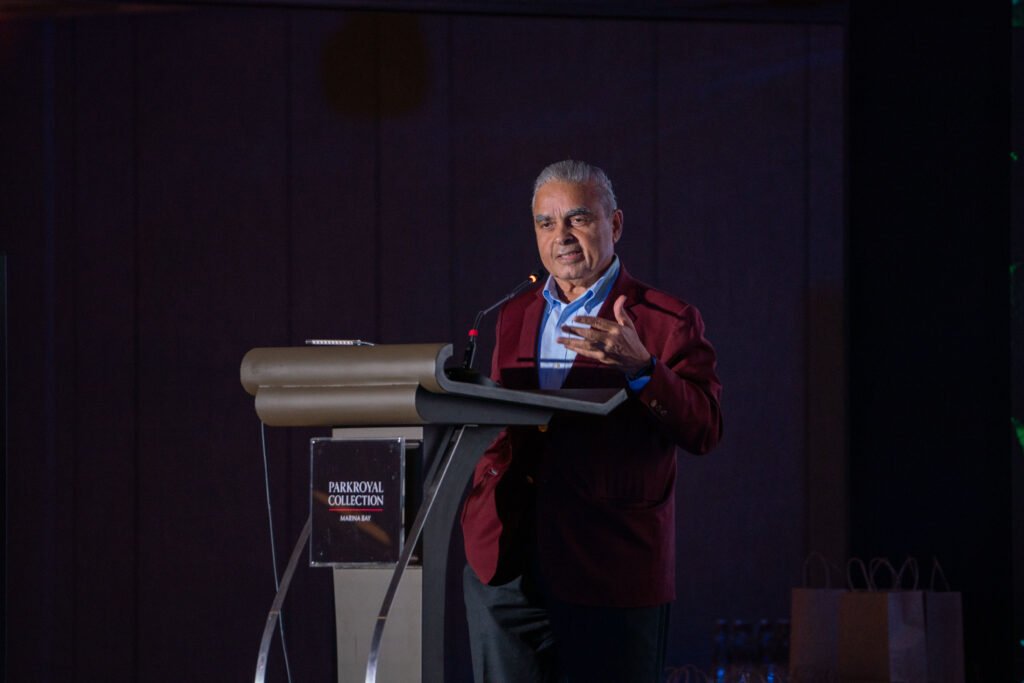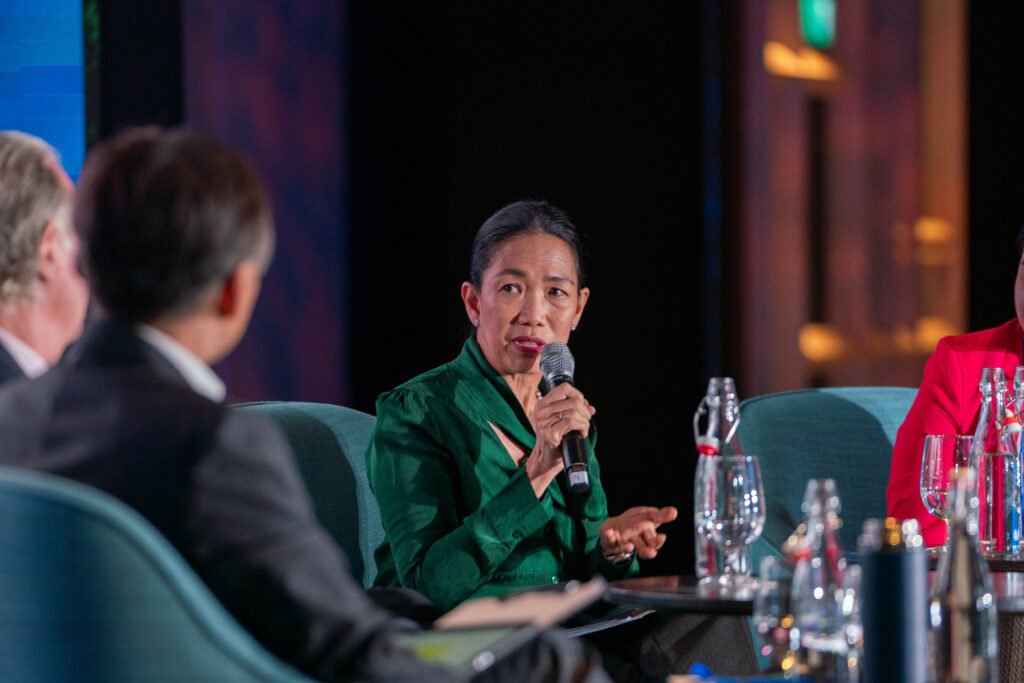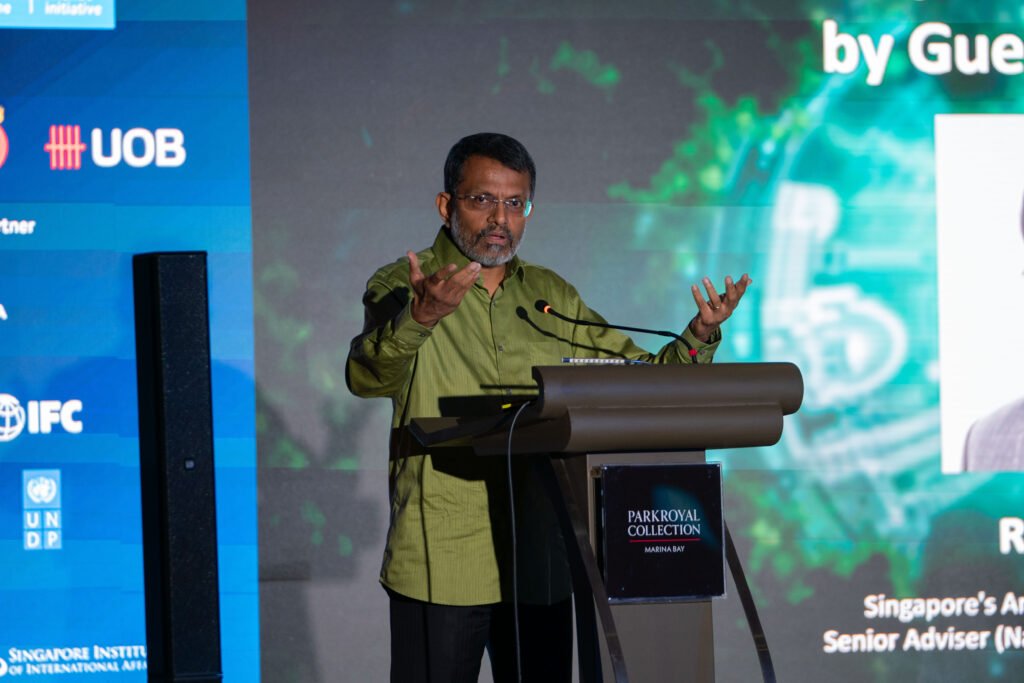Even as nations set sustainability targets and consumers take a stand with their wallets, Asia faces a trillion dollar funding gap in its pursuit of sustainable development.
The region needs to invest US$1.5 trillion every year or about 4% of its GDP from now until 2030 to meet its SDG targets, according to UN ESCAP.
With countries in Asia being the hardest hit by the climate crisis, the region urgently needs the funding to transition to a sustainable future.
In the Unlocking capital for sustainability 2024 summit, leaders and industry players weigh in on green finance barriers and what can be done to remove them.

Geopolitics is an “elephant in the room”
Geopolitics has an outsized role in green finance. While climate change demands global cooperation, geopolitical rivalries – particularly between the United States and China – are creating significant roadblocks.
“I predict that the priority of US and China in the next 10 years will not be climate change, it will be about who’s gonna be #1,” said Kishore Mahbubani, a Distinguished Fellow at the Asia Research Institute, National University of Singapore.
The competition between the world’s two largest greenhouse gas emitters has become so intense that even climate initiatives are enacted with ulterior motives.
Mahbubani raised the USA’s Inflation Reduction Act (IRA) as an example, saying it was largely driven by the desire to outcompete China rather than uphold environmental responsibility.
The IRA is a landmark piece of legislation, being the single largest investment in climate and energy in American history.
“We have to follow geopolitics if you want to understand how to win against climate change,” he suggested. He also underscored the need for shared responsibility, saying all of humanity is on a single ship that could sink or float.
Kevin Franklin, the Chief Growth Officer and Managing Director – Advisory, LRQA said to focus on local bottom-up solutions given that top-down change is slowed by geopolitics.
“We don’t need to wait for policy. Empower SMEs,” he advised.

The “valley of death” in climate tech
Innovative climate technologies are emerging across Asia, but there is a wide gulf between research and commercialization.
Promising solutions are getting stuck in what experts call the “valley of death” — the gap between research and development (R&D) and successful market deployment.
The challenge is particularly acute in Asia, where entrepreneurs face longer product development cycles and must navigate complex technical, commercial, and regulatory environments. While startups often secure initial funding, support frequently falls through in later phases.
As for why the private sector isn’t investing, Ravi Menon, Singapore’s Ambassador for Climate Action, pointed to two main barriers.
For one, there is not enough expertise to prepare projects to a bankable stage. A bankable project has sufficient collateral, future cashflow, and risk allocation to satisfy lenders. The project has to be financially viable and many are not.
“All lenders we talked to want to lend money, they know it’s an issue, but we don’t have bankable deals yet,” opened Kurt Metzger, the Energy Transition Director for Asia Research & Engagement.
Risks are also heightened due to technological uncertainties and longer lead times. New climate technologies might not work as planned, or regulations could change unexpectedly.
Political risk is also a friction point, according to Mike Ng, the Group Chief Sustainability Officer of OCBC, who highlighted concerns about contract breaches, currency fluctuations, and legislative changes that can derail projects.
These factors make investors hesitant to commit capital.
Sustainability-linked deals need to be encouraged, said Melissa Moi, the Head of Sustainable Business, Group Corporate Sustainability Office at United Overseas Bank. She also stressed that banks alone cannot drive the climate transition. Success requires collaboration across the broader ecosystem, including policy support and market incentives.
“Banks can’t do it alone. How does the larger ecosystem come together and how do we move this forward?”
Industry leaders suggest several pathways. Ng highlighted how proper risk allocation can make previously unbankable projects viable, citing Taiwan’s wind farms as an example.
The offshore wind farm industry held a lot of risks in its early stages from 2017 to 2018, but became more attractive to investors after the government introduced supportive policies and assumed demand risk. Policies like fixed pricing and priority dispatch helped overcome initial barriers.
The market itself can drive positive change. “When you buy it’s a signal to us to support the tech, like in the case of EVs which are now significantly cheaper,” said Ng.
When it comes to product development itself, the scale of implementation is the biggest concern for Lucita Jasmin, the Group Sustainability Director of RGE. She suggests integrating existing solutions like the Internet of Things (IoT) that can show results now instead of 20-30 years later.

The slippery slope of transition finance
Another challenge lies in “greening the brown”, which is the process of making traditionally polluting industries more sustainable.
While identifying and investing in purely green projects is relatively straightforward, most activities in Asia are transition activities, raising a crucial question posed by experts at the summit: How do we ensure these transition activities will actually lead to meaningful environmental improvements and are not just greenwashing?
There needs to be a clear definition and understanding on how we’re looking at transition finance, said Jasmin.
“It’s very important to look at the vague transition finance term and contextualize according to industry,” added Ng. In the power sector, for instance, solutions don’t just include renewable energy sources but also grid infrastructure and renewables storage.
Jasmin urged that sectoral decarbonization plans are needed, followed by an investment plan with benchmarks and goals that economy can then step behind on. “In the absence of that, particularly with transition, we’re not seeing the value-add yet.”
To this end, new standards, like the Singapore-Asia Taxonomy for Sustainable Finance emerged to create a common language between startups and investors. It outlines thresholds and criteria for defining green and transition activities across key sectors. These industries include energy, transportation, construction, industry, forestry, agriculture, and information and communications technology.
“If decarbonization projects subscribe to objective standards, they stand a better chance at getting funding,” concluded Menon.
As Asia continues its journey toward sustainable development, addressing these challenges will be crucial for mobilizing the massive investments needed for a greener future.

